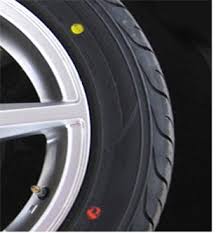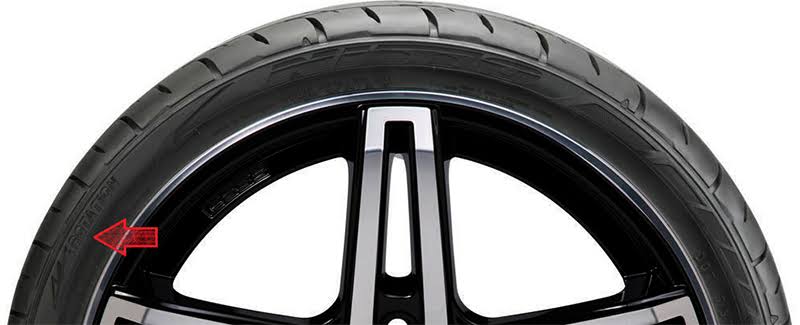
The red and yellow paint dots on the sidewall are entirely normal if you recently had new tires mounted.
Are the tires on sale if they have red and yellow paint dots on them? Are tires with these dots indicate defectiveness in any way? Do the dots indicate the place or date of the tire’s production?
What’s truly going on with these dots is as follows: Because it’s practically impossible to create a perfectly balanced, perfectly rounded tire, manufacturers employ these paint dots to mark any imperfections. The dots help professionals in tire installation and balancing.
What do the colors signify?
Yellow dots: Yellow dots show the lightest section of the tire where the yellow spot is located. When checked by a machine, a tire’s component can be identified even though it won’t be visible when the car is being driven. When a tire has this marking, a tire technician may simply offset the tire by aligning the yellow dot mark with the valve stem, which is the heavier component of a wheel rim or alloy.
Red dots:Red dots represent the tire’s highest position. The highest point in the tire, where the red spot is indicated, must be in line with the lightest portion of the wheel or alloy. The lightest part of a wheel or alloy will be marked with a small blue sticker or with a small circular dot.
If these markings are not present, it can be checked by using a machine by an expert wheel technician, who can then easily fix the red mark towards the lightest part of the wheel. By looking into these markings, a tire technician can easily identify the heaviest point of the tire and that part can be aligned with the lightest part of the tire.
How to figure out if your tires are mounted properly?

Weight method: The valve stem can be found on the side of your tire. The person who mounted your tire followed the instructions on the label and installed it appropriately if it is aligned with one of the colored dots. The valve stem will line up with a yellow dot on the sidewall if it is situated where the tire is the heaviest. You can presume that the valve is where the tire is lightest when a red dot is aligned with the valve stem.
After a tire is fitted, its balance is examined automatically to identify any areas of lighter weight. When it’s time to balance the rims, the machine will prompt the tire technician to place tire weights at various locations around the rim perimeter.
Uniformity Method
Your tire’s radial force fluctuation affects your ability to steer, gain traction, brake, and sustain loads. A red dot indicates the maximum radial force and runout (the distance between the highest and lowest weight locations). To ensure correct installation and create a smooth ride, radial force and runout should be reduced.
The red dot can line up with a rim “dimple” on the outside. This denotes the low point of a wheel and should be followed during mounting. To establish the best balance point during the installation, pair a dot with either the lightest or the heaviest weight area. The red dot will take precedence if both colored dots are present.
If you can see both red and yellow dots on your tire, and your wheel is clear of any spots or marks, red has precedence over yellow, therefore you have to align up the red dot alongside the valve stem. The lightest part of the tire is dealt with by wheel weights, although canceling out the high point takes precedence.